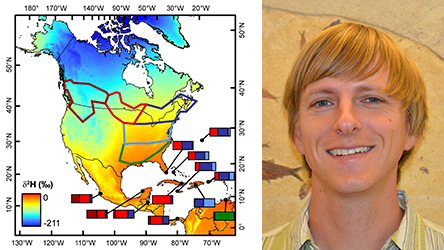To a large degree this imprecision stems from the high degree of variance among individuals living in a common location: a given tissue isotope value is likely to be observed at many locations, and a wide range of isotope values are likely at a given location. Is this inherent variation, i.e. unintelligible noise stemming from unidentifiable sources, or is there useful ecological information embedded in this noise? We are examining H isotope variability at three scales, across regions, species, and individuals, using quantitative models and field and lab data to attribution sources of variation at each scale.
I will present promising results from ongoing work that suggest systematic, rather than random, processes govern variation in many components of the system, and discuss next steps for our work and for the community that could improve our understanding of the H isotope systematics of animal consumers and, ultimately, the precision of geographic assignments.
Gabriel Bowen is a Professor of Geology & Geophysics and member of the Global Change and Sustainability Center at the University of Utah, where he leads the Spatio-temporal Isotope Analytics Lab (SPATIAL) and is co-director of the SIRFER stable isotope lab. His research employs spatial and temporally resolved geochemical data to study Earth systems processes ranging from coupled carbon and water cycle change in geologic history to the movements of modern and near-modern humans. In addition to fundamental research, he has led the development of cyberinformatics tools and training programs supporting cross-disciplinary applications of environmental geochemistry data.
